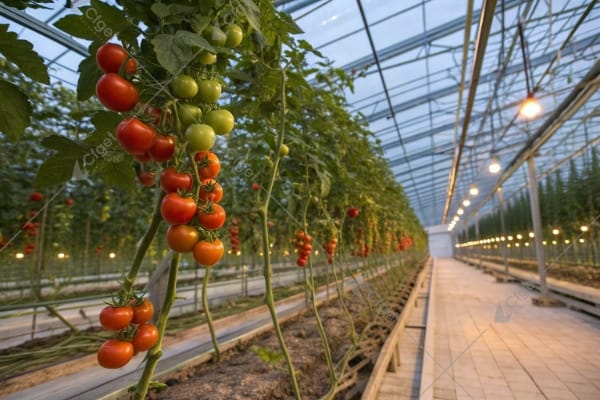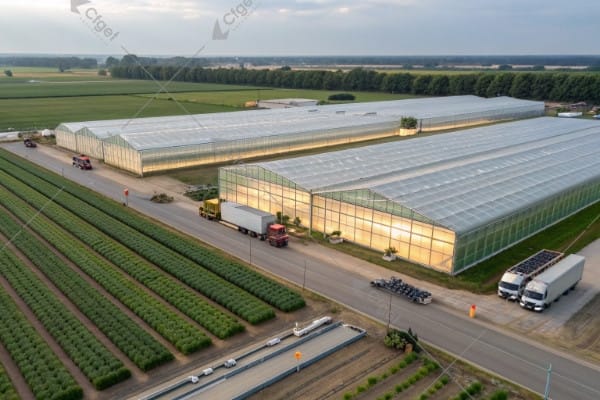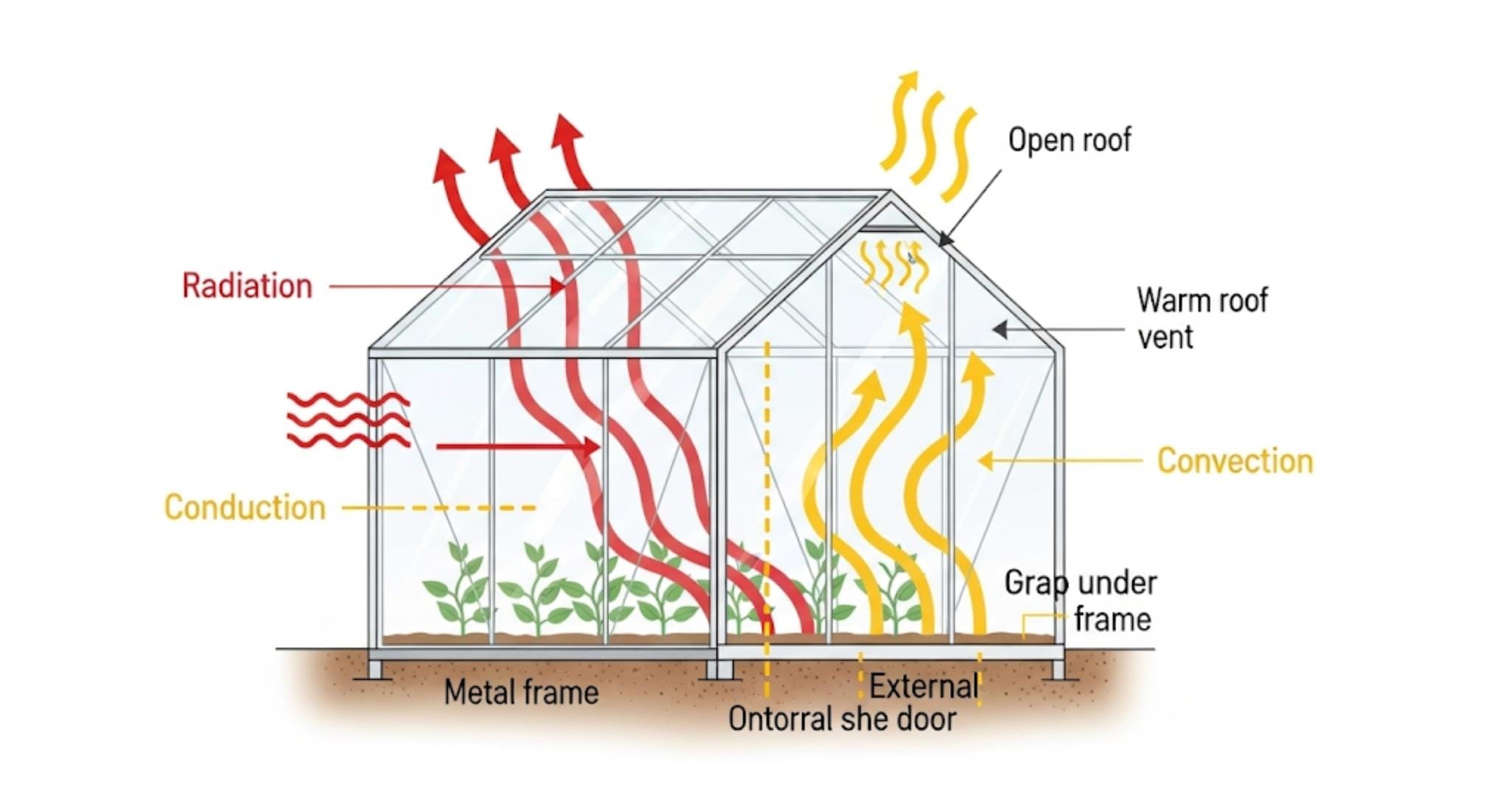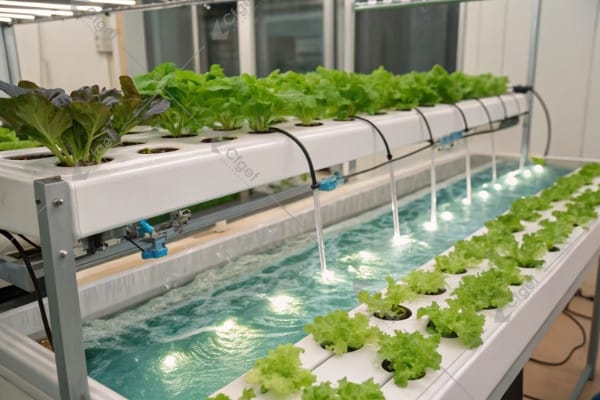Commercial greenhouse operations face mounting pressure from rising water costs and strict efficiency standards. Without proper irrigation systems, crops fail and profits disappear. Smart growers invest in proven irrigation technology.
The six best irrigation systems for commercial greenhouses in 2025 are drip irrigation, micro-sprinklers, subsurface drip, mobile overhead sprinklers, fogger systems, and ebb-and-flow systems. Each offers unique advantages for different cultivation methods and crop types.
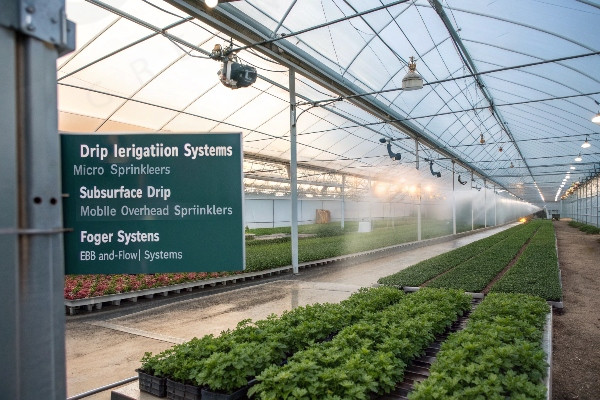
After 29 years in the greenhouse industry, I have seen irrigation technology evolve dramatically. The systems we install today deliver precision that was impossible just a decade ago. Modern growers demand efficiency, and these six irrigation methods represent the cutting edge of agricultural water management. Each system serves specific cultivation approaches, from traditional soil growing to advanced hydroponic operations.
Don’t Miss:——Commercial Hydroponic Greenhouse Systems: How Do Design, Construction, and ROI Interconnect?
You might like:——What is a Smart Greenhouse? The Ultimate Guide to Automated Growing
Drip Irrigation Systems: The Top Choice for Precision, Efficiency, and Water Saving – Pros & Cons?
Water waste kills greenhouse profitability faster than any other factor. Traditional irrigation methods flood crops with excess water while leaving root zones thirsty. Precision irrigation delivers exact water amounts directly where plants need them most.
Drip irrigation systems deliver water directly to plant root zones through small emitters, reducing water waste by up to 50% compared to overhead sprinklers. This method provides precise nutrient delivery and prevents foliar diseases common with overhead watering.
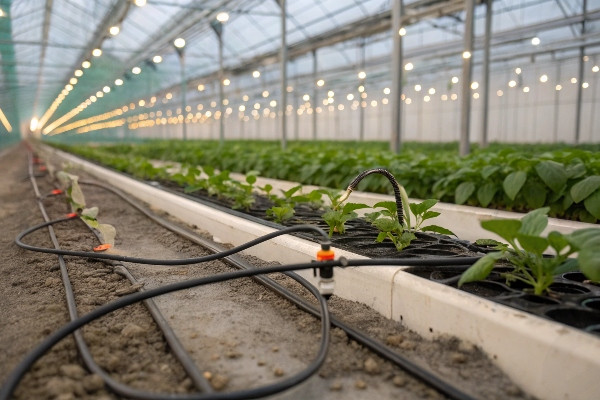
Understanding Drip System Components and Performance
Modern drip irrigation systems consist of several key components that work together to deliver precise water management. The main water line connects to a filtration system that removes particles and contaminants. Pressure regulators maintain consistent water flow throughout the greenhouse. Distribution lines carry water to individual crop rows, while emitters control the final delivery rate to each plant.
The heart of any drip system lies in its emitter technology. Pressure-compensating emitters maintain consistent flow rates regardless of elevation changes or line pressure variations. Self-flushing emitters prevent clogging by automatically clearing debris during startup and shutdown cycles. Flow rates typically range from 0.5 to 4 gallons per hour per emitter, allowing precise customization for different crop requirements.
Installation costs vary significantly based on greenhouse size and complexity. A basic drip system for a 1000 square foot greenhouse typically costs between $800 and $1500. Larger commercial operations benefit from economies of scale, with per-square-foot costs decreasing as greenhouse size increases. The return on investment usually occurs within 18 to 24 months through reduced water bills and improved crop yields.
| Drip System Advantages | Drip System Disadvantages |
|---|---|
| 30-50% water savings compared to sprinklers | Higher initial installation costs |
| Precise nutrient delivery reduces fertilizer waste | Requires regular maintenance and cleaning |
| Reduces foliar diseases and pest problems | Vulnerable to clogging from hard water |
| Works with automation systems | Limited coverage for seed starting |
| Suitable for all crop types and growth stages | May require multiple zones for different crops |
Micro-Sprinkler Systems: Ideal for Broader Coverage and Regulating Greenhouse Microclimates?
Greenhouse microclimates can vary dramatically across different zones and elevations. Hot spots and dry areas create uneven growing conditions that stress plants and reduce yields. Uniform moisture distribution becomes critical for consistent crop performance.
Micro-sprinkler systems provide broader water coverage than drip irrigation while using less water than full-size sprinklers. These systems create gentle, uniform spray patterns that cool greenhouse air and maintain optimal humidity levels for plant growth.
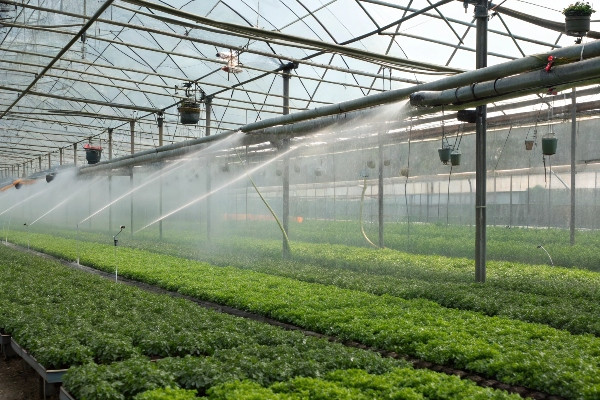
Micro-Sprinkler Design and Climate Benefits
Micro-sprinkler technology bridges the gap between drip irrigation precision and overhead sprinkler coverage. These systems use small spinning or fixed spray heads that distribute water in circular patterns ranging from 6 to 20 feet in diameter. The gentle spray creates fine water droplets that cool the air through evaporation while providing moisture directly to plant canopies and root zones.
Climate control represents one of the most significant advantages of micro-sprinkler systems. During hot summer months, the evaporative cooling effect can reduce greenhouse temperatures by 8 to 15 degrees Fahrenheit. This cooling benefit reduces the load on mechanical ventilation systems and creates more comfortable growing conditions for temperature-sensitive crops like lettuce and herbs.
Water application rates for micro-sprinklers typically range from 0.5 to 2 inches per hour, allowing flexible scheduling based on crop needs and environmental conditions. The systems work particularly well for seed starting operations where gentle, uniform moisture promotes even germination. Many growers use micro-sprinklers during the early growth stages and switch to drip irrigation as plants mature.
| Micro-Sprinkler Benefits | Micro-Sprinkler Limitations |
|---|---|
| Excellent temperature and humidity control | Higher water usage than drip systems |
| Uniform coverage across large areas | May promote foliar diseases if overused |
| Ideal for seed starting and propagation | Wind can affect spray patterns |
| Lower installation costs than drip systems | Requires higher water pressure |
| Easy to adjust and maintain | Not suitable for water-sensitive crops |
Subsurface Drip Irrigation: Direct Root Watering for Maximized Water and Fertilizer Use Efficiency?
Surface irrigation wastes precious water through evaporation and runoff. Nutrients applied to soil surfaces often fail to reach root zones where plants can absorb them effectively. Underground delivery systems eliminate these losses while maximizing plant uptake.
Subsurface drip irrigation places water and nutrients directly in the root zone through buried drip lines, achieving 95% water use efficiency. This method eliminates surface evaporation, reduces weed growth, and prevents nutrient leaching beyond the root zone.
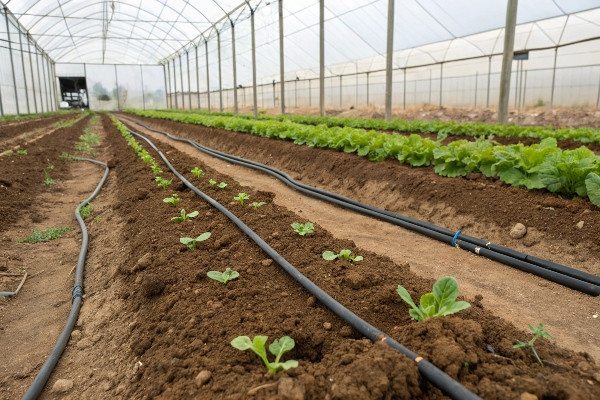
Subsurface System Installation and Root Zone Management
Subsurface drip irrigation represents the most water-efficient irrigation method available for greenhouse production. The system places drip lines 6 to 18 inches below the soil surface, depending on crop root depth and soil type. Buried emitters deliver water directly to the active root zone, eliminating surface evaporation losses that can account for 30% to 50% of applied water in surface irrigation systems.
Installation requires careful planning and precise execution. Drip lines must be positioned at optimal depths to match crop root patterns. Shallow-rooted crops like lettuce and herbs require lines at 6 to 8 inch depths, while tomatoes and cucumbers need deeper placement at 12 to 18 inches. Soil type affects installation depth, with sandy soils requiring shallower placement to prevent water from draining below the root zone.
The system excels in preventing weed growth by keeping soil surfaces dry. This benefit reduces labor costs for weed control and eliminates competition for water and nutrients. Root intrusion can pose challenges in some installations, requiring root barriers or specialized emitters designed to resist clogging. Regular flushing maintains system performance and prevents mineral buildup in buried lines.
| Subsurface Advantages | Subsurface Challenges |
|---|---|
| 95% water use efficiency rating | Higher installation complexity |
| Eliminates surface evaporation losses | Difficult to monitor emitter performance |
| Prevents weed germination and growth | Root intrusion can clog emitters |
| Protects irrigation lines from damage | Requires specialized maintenance tools |
| Ideal for automation and fertigation | May create uneven soil moisture patterns |
Mobile Overhead Sprinkler Systems: Automated and Multifunctional Solutions for Large Modern Greenhouses?
Large greenhouse operations struggle with labor costs and irrigation consistency across vast growing areas. Fixed irrigation systems require extensive piping and multiple control zones that increase complexity and maintenance. Mobile systems offer flexibility and automation for efficient large-scale production.
Mobile overhead sprinkler systems travel automatically along greenhouse bays, providing uniform water application across large areas with minimal labor. These systems combine irrigation, cooling, and chemical application capabilities in one automated platform.
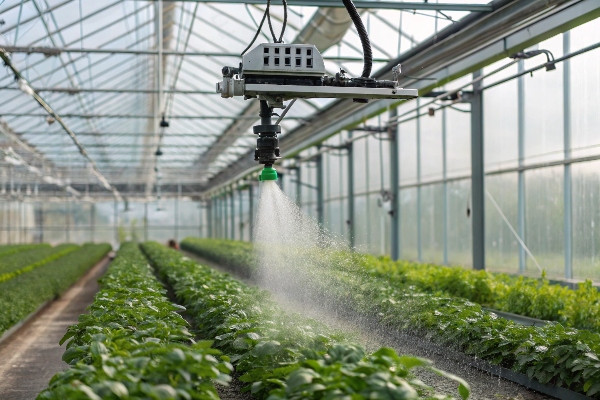
Mobile System Automation and Large-Scale Efficiency
Mobile overhead sprinkler systems revolutionize irrigation management for large commercial greenhouse operations. These systems mount on overhead tracks or rails and move automatically through designated growing areas. Programmable controllers manage travel speed, spray patterns, and application rates to ensure uniform coverage across the entire greenhouse.
The automation capabilities extend beyond basic irrigation to include multiple functions within a single system. Many mobile units incorporate cooling systems that reduce temperatures during hot weather. Chemical application attachments allow for automated pesticide and fungicide treatments. Some advanced models include monitoring sensors that collect data on temperature, humidity, and plant health as they traverse the greenhouse.
Water application uniformity represents a key advantage of mobile systems. Unlike fixed sprinklers that create overlapping and gap areas, mobile units maintain consistent coverage by controlling travel speed and spray patterns. Application rates typically range from 0.1 to 0.5 inches per pass, allowing multiple passes for heavier watering or single passes for light moisture maintenance.
| Mobile System Benefits | Mobile System Drawbacks |
|---|---|
| Uniform coverage across large areas | High initial investment costs |
| Multiple functions in one system | Requires overhead track installation |
| Reduces labor costs significantly | Limited to straight greenhouse bays |
| Programmable automation capabilities | Mechanical complexity increases maintenance |
| Ideal for cooling and chemical applications | May not suit crops requiring precise timing |
Fogger and Misting Systems: Precision Humidity Control for Optimal Plant Growth Environment?
Greenhouse humidity levels directly impact plant health, disease pressure, and overall crop quality. Too little humidity stresses plants and reduces photosynthesis efficiency. Excessive humidity promotes fungal diseases and reduces plant transpiration. Precision humidity control becomes essential for optimal growing conditions.
Fogger and misting systems create ultra-fine water droplets that increase humidity levels without saturating plant surfaces. These systems provide precise environmental control while reducing water consumption compared to traditional overhead irrigation methods.
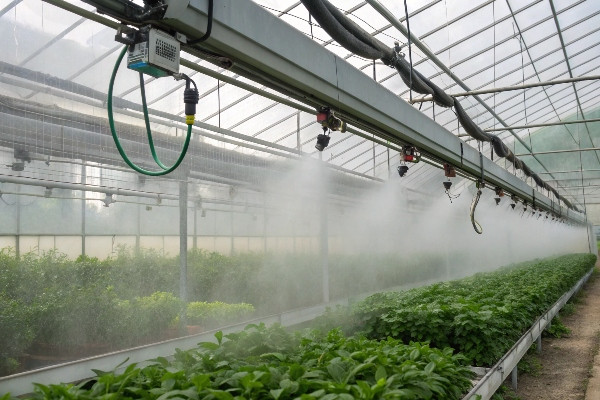
High-Pressure Fogging Technology and Environmental Benefits
High-pressure fogging systems operate at 800 to 1000 PSI to create water droplets smaller than 10 microns in diameter. These tiny droplets remain suspended in the air long enough to evaporate and increase humidity levels without wetting plant surfaces. The evaporation process also provides significant cooling benefits, reducing greenhouse temperatures by 10 to 20 degrees during hot weather.
System components include high-pressure pumps, specialized nozzles, and precise control systems. Stainless steel or brass nozzles resist corrosion and maintain consistent spray patterns over extended periods. Water filtration systems remove particles that could clog the tiny nozzle openings. Programmable controllers manage timing cycles based on humidity sensors and environmental conditions.
The technology excels in propagation houses and seed starting areas where maintaining optimal humidity levels promotes faster germination and stronger seedling development. Many orchid and tropical plant growers rely on fogging systems to recreate natural environmental conditions. The systems also help reduce spider mite populations by increasing humidity levels above the threshold these pests prefer.
| Fogging System Advantages | Fogging System Limitations |
|---|---|
| Precise humidity control within 5% accuracy | Requires high-pressure pumps and maintenance |
| Significant cooling benefits in hot weather | Water quality must be excellent to prevent clogging |
| Reduces spider mite and aphid populations | High energy consumption from pump operation |
| Perfect for propagation and seed starting | May promote fungal diseases if overused |
| Can be integrated with climate control systems | Requires regular nozzle cleaning and replacement |
Ebb and Flow Systems: Versatile Flood-and-Drain Solutions for Container and Hydroponic Production?
Container production and hydroponic operations require irrigation methods that accommodate different pot sizes and growing media. Traditional drip systems struggle with uneven coverage in containerized crops. Flood irrigation provides thorough saturation but often leads to waterlogged conditions and root problems.
Ebb and flow systems flood growing areas with nutrient solution before draining completely, ensuring thorough root zone saturation without waterlogging. This method works perfectly for container production and hydroponic operations requiring precise nutrient delivery.
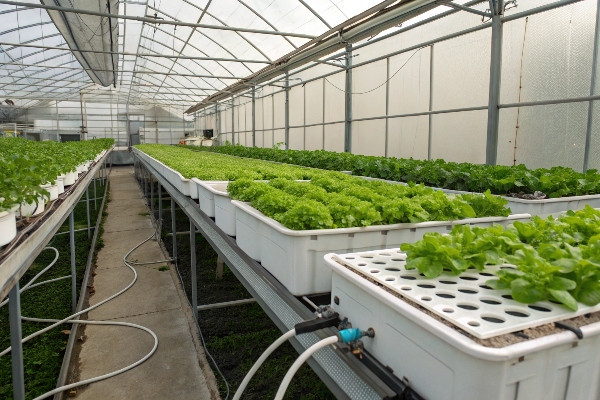
Flood-and-Drain Mechanics and Hydroponic Applications
Ebb and flow systems operate on a simple flood-and-drain principle that provides thorough irrigation while preventing waterlogged conditions. The system floods growing benches or floors with nutrient solution to a predetermined depth, typically 1 to 3 inches. After a set contact time, usually 15 to 30 minutes, the solution drains back to a reservoir for filtration and reuse.
The drainage action creates a vacuum effect that pulls fresh air into the growing medium, providing essential oxygen to plant roots. This air exchange prevents anaerobic conditions that lead to root rot and other problems common in constantly wet systems. The cycle typically repeats 2 to 6 times daily, depending on plant size, growing medium, and environmental conditions.
System design requires careful attention to bench construction and drainage components. Growing benches must be level and properly sloped toward drain points to ensure complete drainage. Overflow drains prevent flooding if primary drains become blocked. Reservoir sizing depends on the volume of growing area and solution contact time, typically requiring 1 to 2 gallons per square foot of growing space.
| Ebb and Flow Benefits | Ebb and Flow Challenges |
|---|---|
| Perfect for container and pot production | Requires level benches and proper drainage |
| Provides excellent root zone oxygenation | Higher water volume requirements |
| Suitable for various growing media types | Potential for disease spread through shared solution |
| Easy to automate with timers and sensors | Limited to flat growing surfaces |
| Nutrient solution can be recycled and reused | Pump failures can damage crops quickly |
You might like:——5 Major Hydroponic Systems Explained
Conclusion
These six irrigation systems represent the best options for commercial greenhouse operations in 2025. Choose based on your crops, budget, and growing methods for optimal results.

